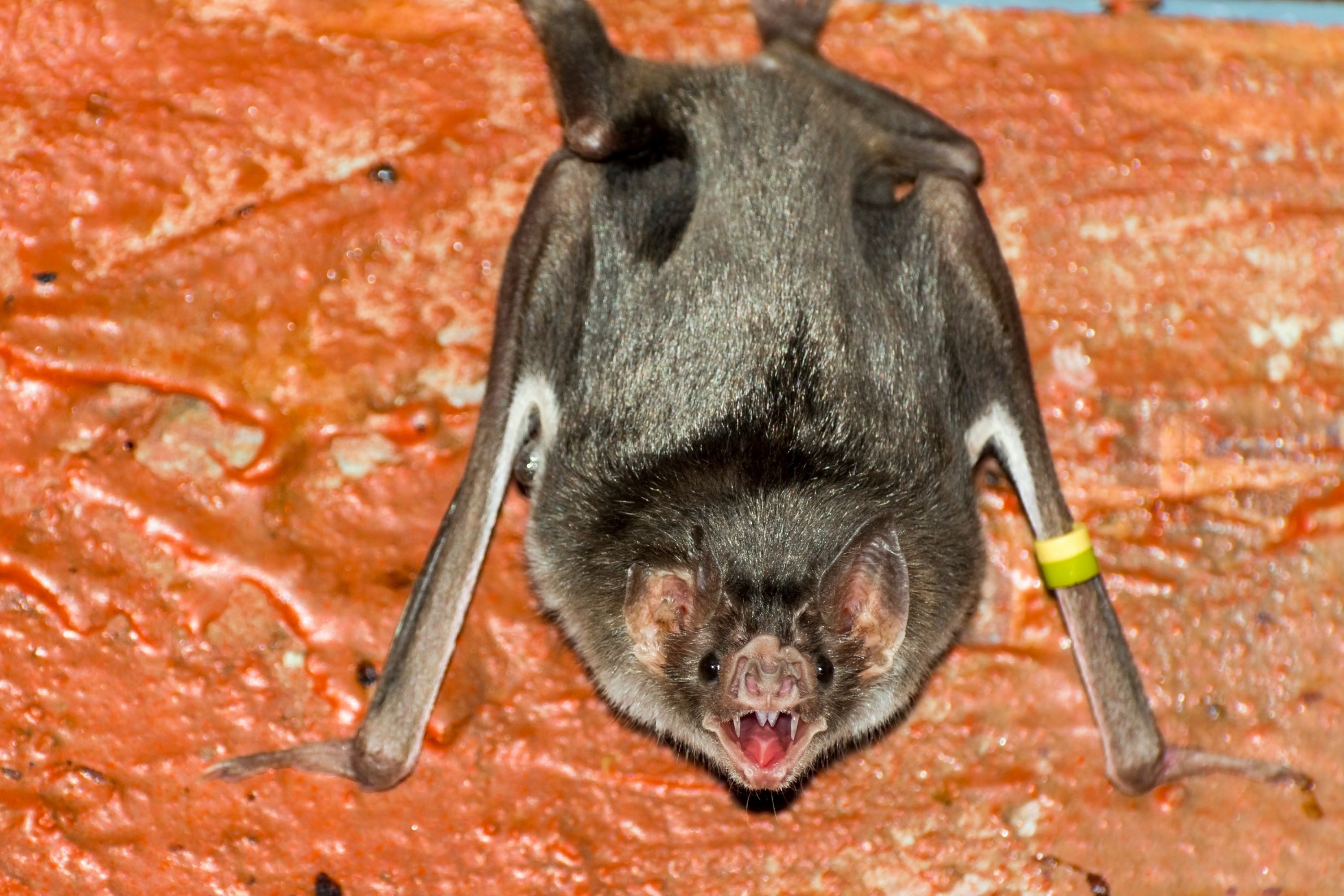Common vampire bat
(Desmodus rotundus)

Description
The common vampire bat (Desmodus rotundus) is a small, leaf-nosed bat native to Latin America. It is one of three extant species of vampire bat, the other two being the hairy-legged and the white-winged vampire bats. The common vampire bat practices hematophagy, mainly feeding on the blood of livestock. The bat usually approaches its prey at night while they are sleeping. It then uses its razor-sharp teeth to cut open the skin of its hosts and lap up their blood with its long tongue. The species is highly polygynous, and dominant adult males defend groups of females. It is one of the most social of bat species with a number of cooperative behaviors such as social grooming and food sharing. Because it feeds on livestock and is a carrier of rabies, the common vampire bat is considered a pest. Its conservation status is categorized as Least Concern by the International Union for Conservation of Nature (IUCN) because of "its wide distribution, presumed large population tolerance of a degree of habitat modification, and because it is unlikely to be declining at nearly the rate required to qualify for listing in a threatened category." The common vampire bat is short-haired, with silver-gray fur on its undersides, demarcated from the darker fur on its back. It has a deeply grooved lower lip, and a flat, leaf-shaped nose. A well-developed, clawed thumb on each wing is used to climb onto prey and to assist the animal in take-off. The bat averages about 9 cm (3.5 in) long with a wingspan of 18 cm (7 in). It commonly weighs about 25-40 grams (2 oz), but its weight can drastically increase after a single feeding. The braincase is relatively large, but the snout is reduced to accommodate large incisors and canines. It has the fewest teeth among bats. The upper incisors lack enamel, which keeps them razor-sharp. Its dental formula is, for a total of 18 teeth. While most other bats have almost completely lost the ability to maneuver on land, vampire bats are an exception. They can run using a unique, bounding gait in which the forelimbs are used instead of the hindlimbs to propel forward, as the wings are much more powerful than the legs. This ability likely evolved independently within the bat lineage. Three pads under the thumb function like a sole. It is also capable of leaping in various directions, heights, and distances. When making a jump, the bat pushes up with its pectoral limbs.
Taxonomic tree:







